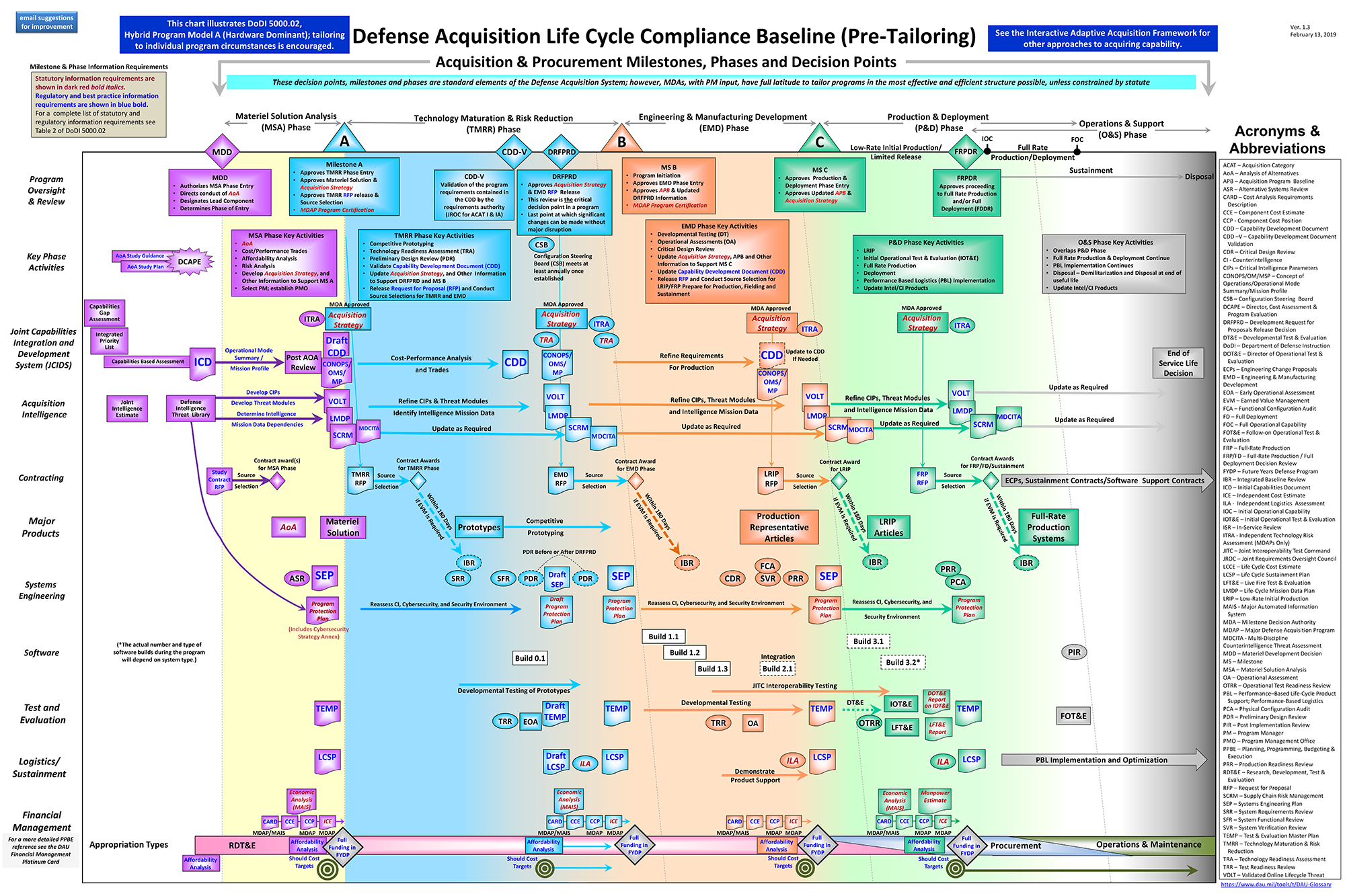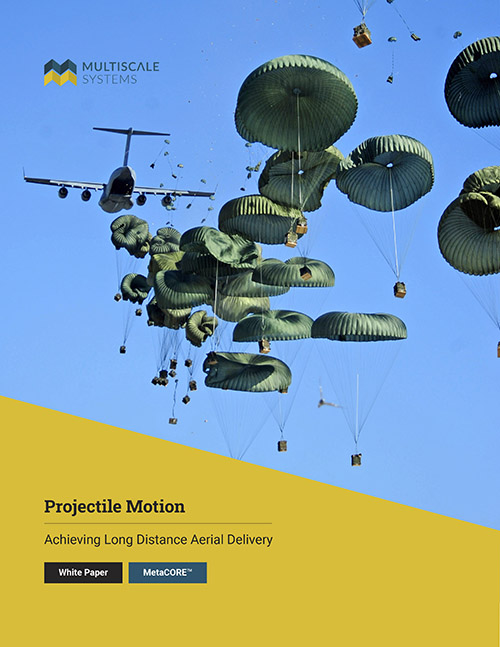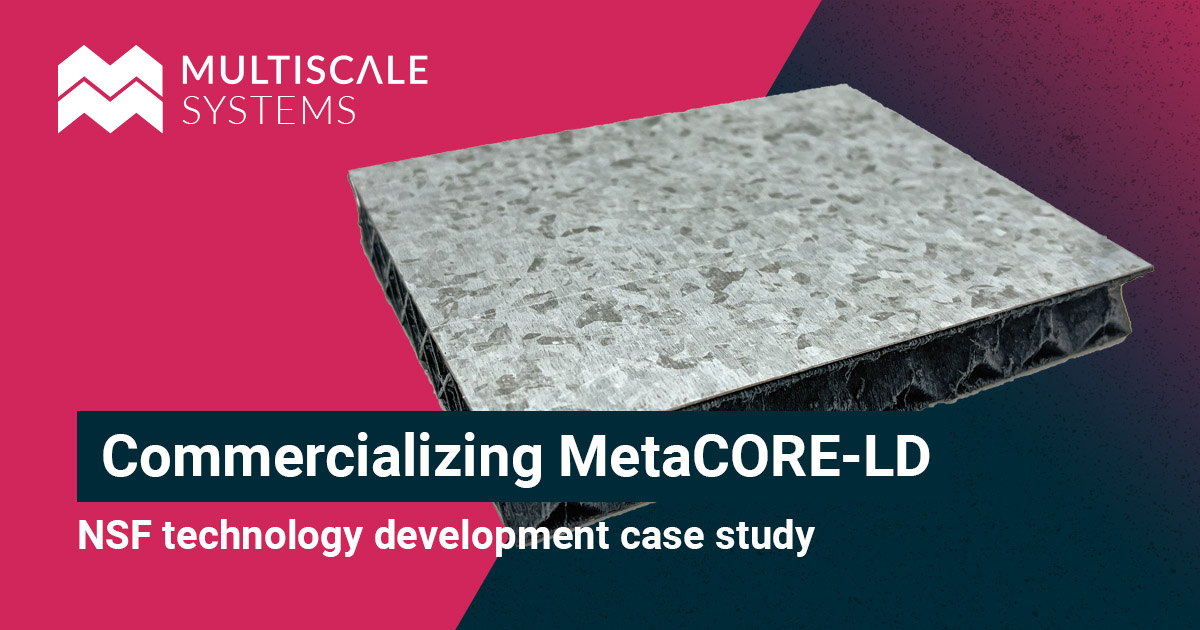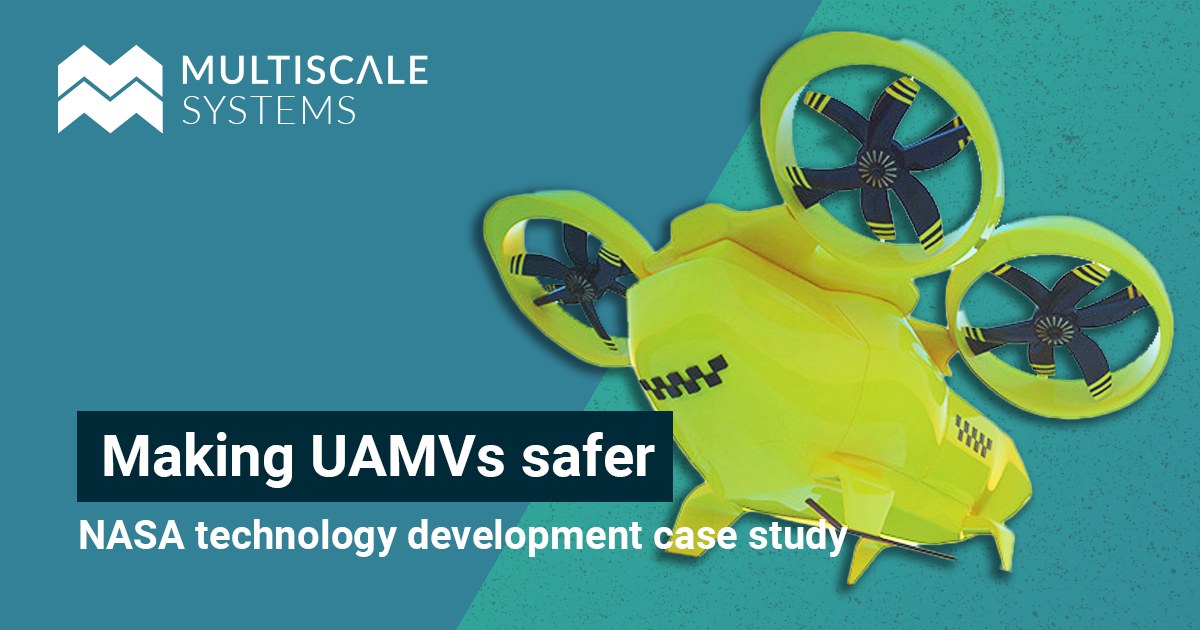Lessons learned from xTechSearch and technology development within the US Army
The US Army is modernizing its acquisition of disruptive technologies like our mechanical metamaterial solutions. Representatives from AFC and ASA(ALT) selected Multiscale Systems’ MetaCORE technology for acceleration through the xTechSearch program.
Outcomes:
New manufacturing and testing capabilities; Business development
Technology development:
MetaCORE, MetaCORE-LD
Funding:
Prize competition
The character of small and large businesses
Businesses in the U.S. range in size from the lone wolf sole proprietorship to the 800,000-employee gorilla that is Amazon. Typically, smaller businesses can adapt to change quickly, innovate overnight, and pivot on a dime.
In contrast, larger businesses are better known for the staying power that comes from their ability to cater to large markets. Though businesses are usually lumped together into a single catch-all bucket, the distinct character of small and large ones makes them fundamentally different animals.
The Defense industrial base
The dynamics between small and large businesses in the Defense sector are engineered to leverage each other’s strengths. In the modern defense industrial base, small companies are frequently funded by Government contracts to innovate, while large companies are funded to integrate those innovations into a system or platform.
Of course, the Raytheons, General Dynamics, and Lockheed Martin’s of the world are innovating, but the huge scale of those organizations makes it impossible to move at the speed of a nimble small business. The selection of Department of Defense (DoD) funding for the most promising innovations propels the technology of smaller businesses into being integrated on a larger scale, leading to meaningful impacts on national defense capabilities.
How the US Army acquires new things
It’s one thing to talk in general terms about how large and small businesses work together in the Defense market, but it obscures import points about the acquisition process itself. If you’ve never seen this diagram for how the Army acquires new technology, brace yourself:

The Defense Acquisition Life Cycle Compliance Baseline (Pre-Tailoring) chart. View the high definition original PDF on the Defense Acquisition University website.
Yes, it’s complicated.
Embedded in this chart are notions like the “colors of money,” “systems engineering process,” and “lifecycle functions.” In fact, there is literally a school – the Defense Acquisition University – who’s main purpose is to train a DoD acquisitions workforce on the processes depicted above.
On one hand, once you get into the weeds, it’s (mostly) a well thought out rational system for ensuring the people who join the Army are provided the best possible equipment at reasonable taxpayer expense.
On the other hand, it’s slow as molasses and a monstrous barrier for small businesses who don’t have a history of working with the DoD (so-called “non-traditionals”).
What xTechSearch is looking to do
The acquisition process is what the acquisition process is. But then 9/11 happened and mucked everything up.
A brief history: The west coast venture capital community approached the DoD shortly after 9/11 and made a point: venture capitals (VC), start-ups, and entrepreneurs are famously able to adapt to change and innovate overnight. Why not introduce some of that start-up culture to the Defense industrial base to accelerate and infuse the technologies needed to push back against 9/11 terror?
Decision-makers at the Pentagon agreed and subsequently directed each branch to explore innovations in their acquisition and procurement process.
Within the Army, the principals involved decided to take an approach modeled on a Shark Tank-style competition. And so, xTechSearch was born. This multi-phase competition involved a series of increasingly higher stakes pitches to Army subject matter experts where winners of each round were down selected and invited to the next round along with a cash incentive. In the later stages of the competition, the finalists (including Multiscale Systems) were provided an intense 6-month immersion and mentorship program led by FedTech, the accelerator arm of xTechSearch.
From the perspective of an xTechSearch alumni, the program is accomplishing a lot of things all at the same time. It’s:
- improving Warfighter readiness by getting the latest and best technologies in front of relevant Army personnel;
- an ongoing platform for experimenting with innovation in the Army’s acquisitions process;
- an experiment for exploring how best to use the various acquisition tools in the Army toolbox including Small Business Innovative Research (SBIR), Broad Agency Announcements (BAA), Cooperative Research and Development Agreements (CRADA), and Other Transaction Authority (OTA) instruments;
- incentivizing entrepreneurs to commercialize innovations in a famously challenging market;
- socializing these entrepreneurs with the DoD Primes and a defense-centric VC community, analogous to the more conventional deep-tech VCs;
- infusing new technology into the large Defense contractors (the “Primes”), who start to integrate them into their next generation systems;
- helping new businesses get dual-use technology across the start-up “valley of death”.
That’s actually quite a lot to show for a relatively small program budget.
What we learned from xTechSearch and why it matters
Multiscale Systems entered xTechSearch without any prior experience or knowledge on how to work with the DoD. We ended up competing and winning three consecutive phases, making it to the Grand Finals, and scoring in the top ~2% of some 400 total competitors in our cohort. The prize money we received was invested into the company’s growth to expand our facilities and equipment (PDF). The immersion program taught us some history and context for DoD acquisitions. The mentorship exposed us to both civilian (ASA(ALT)) and military (AFC CFT) sides of the Army.
Another critical takeaway for us was that we learned empathy.
Empathy for the Warfighter that must deal with heat, cold, physical stress, and psychological exhaustion.
Empathy for the operational challenges of creating reliable and predictable supply chains.
Empathy for the acquisitions community that must make high stakes purchasing decisions with imperfect information.
Empathy for all the individuals within this bureaucracy, which itself is constantly evolving, changing, and reorganizing in response to the ebb and flow of Congressional spending and Executive authority.
We went into xTechSearch focused on the deeply technical aspects of lightweight impact absorbing metamaterials for use in air drops. But what we came out of xTechSearch with was a much wider appreciation for the ecosystem we were immersed in, and the opportunities advanced materials have for improving the Warfighter’s quality of life.
Explore our technology development case studies
National Science Foundation
How our metamaterial research evolved into a targeted commercialization strategy for MetaCORE-LD as an alternative lightweight sandwich panel for semi-trailers.
NASA
Developing lightweight crash mitigation technology in preparation for the emerging UAMV market.
Department of Energy
A reliable replacement for elastomers used in high-temperature, high-pressure sealing applications
National Institute of Standards and Technology
Non-destructive testing of complex 3D geometry with optical metrology opens the door to high-quality mass production.





